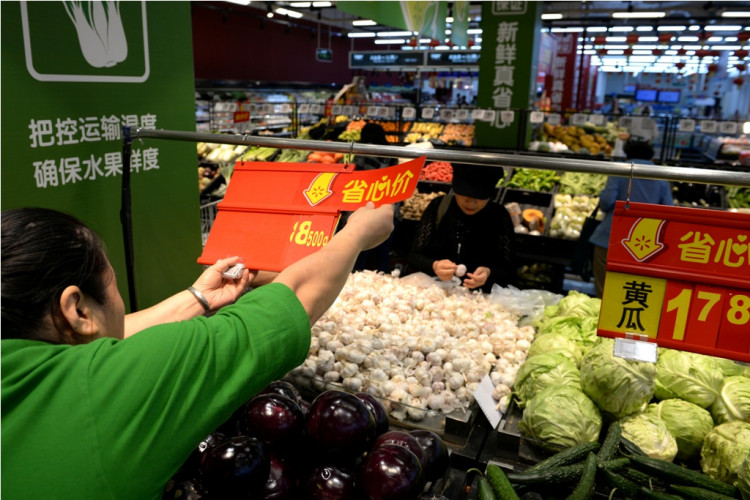China's consumer prices have risen for the third consecutive month in April, while producer prices continue to decline, indicating an improvement in domestic demand as Beijing navigates the challenges of bolstering a faltering economy. The closely monitored economic indicators follow better-than-expected import data for April, suggesting that the numerous policy support measures implemented over the past several months may be helping to boost consumer confidence.
According to data from the National Bureau of Statistics, consumer prices increased by 0.3% in April compared to the previous year, surpassing the 0.1% rise in March and the Reuters poll forecast of a 0.2% increase. Xu Tianchen, a senior economist at the Economist Intelligence Unit, noted that when food and energy prices are excluded, the consumer inflation data points to a resurgence in demand, particularly in the services sector.
Core inflation, which excludes volatile food and fuel prices, grew by 0.7% in April, up from 0.6% in March. The overall consumer price index (CPI) rose by 0.1% from the previous month, beating the forecast of a 0.1% decline in the poll and reversing the 1% drop in March.
Despite these positive signs, most China watchers believe that Beijing still has a long way to go, and the momentum may prove to be unsustainable. Official surveys show cooling factory and services activity, while a prolonged housing crisis shows no sign of abating, strengthening the case for further policy support.
Xu Tianchen also highlighted that price hikes by utility companies could be another potential driver of inflation. "The fiscal strains some local governments are facing affect the subsidies they receive, which could be forcing them to pass the extra cost on to households to make ends meet," he added. Officials are currently grappling with a municipal debt of $13 trillion, and the State Council, or cabinet, has instructed heavily indebted local governments to delay or halt some state-funded infrastructure projects.
Zhou Maohua, a macroeconomic researcher at China Everbright Bank, stated that the prices data suggests that domestic demand is recovering, and the outlook for domestic demand and price recovery is optimistic. However, he also cautioned that consumer prices remain low, and the industrial manufacturing sector is still under pressure, reflecting insufficient effective demand and an imbalanced recovery in the sector.
The producer price index (PPI) fell by 2.5% in April compared to the previous year, easing from a 2.8% decline in the previous month but extending a 1-1/2-year-long stretch of declines.
On Friday, China's central bank announced that it would make monetary policy flexible, precise, and effective, and promote a moderate recovery in consumer prices to consolidate economic recovery. These comments, made in a quarterly monetary policy report, follow remarks made by the Politburo, a top-decision making body of the ruling Communist Party, in April stating that China will use policy tools, such as banks' reserve requirement ratio (RRR) and interest rates, to prop up growth.
Bruce Pang, chief economist for China at Jones Lang LaSalle, emphasized that policy support should take advantage of the current momentum by strengthening expectation management and creating more consumption scenarios, considering the Politburo's assessment that "effective demand is still insufficient."
Many analysts believe that China's economic growth target of about 5% in 2024 will be challenging to achieve without further policy support. As Beijing navigates the complexities of shoring up its economy, the international community will be closely monitoring the effectiveness of the country's policy measures and the sustainability of its economic recovery.






